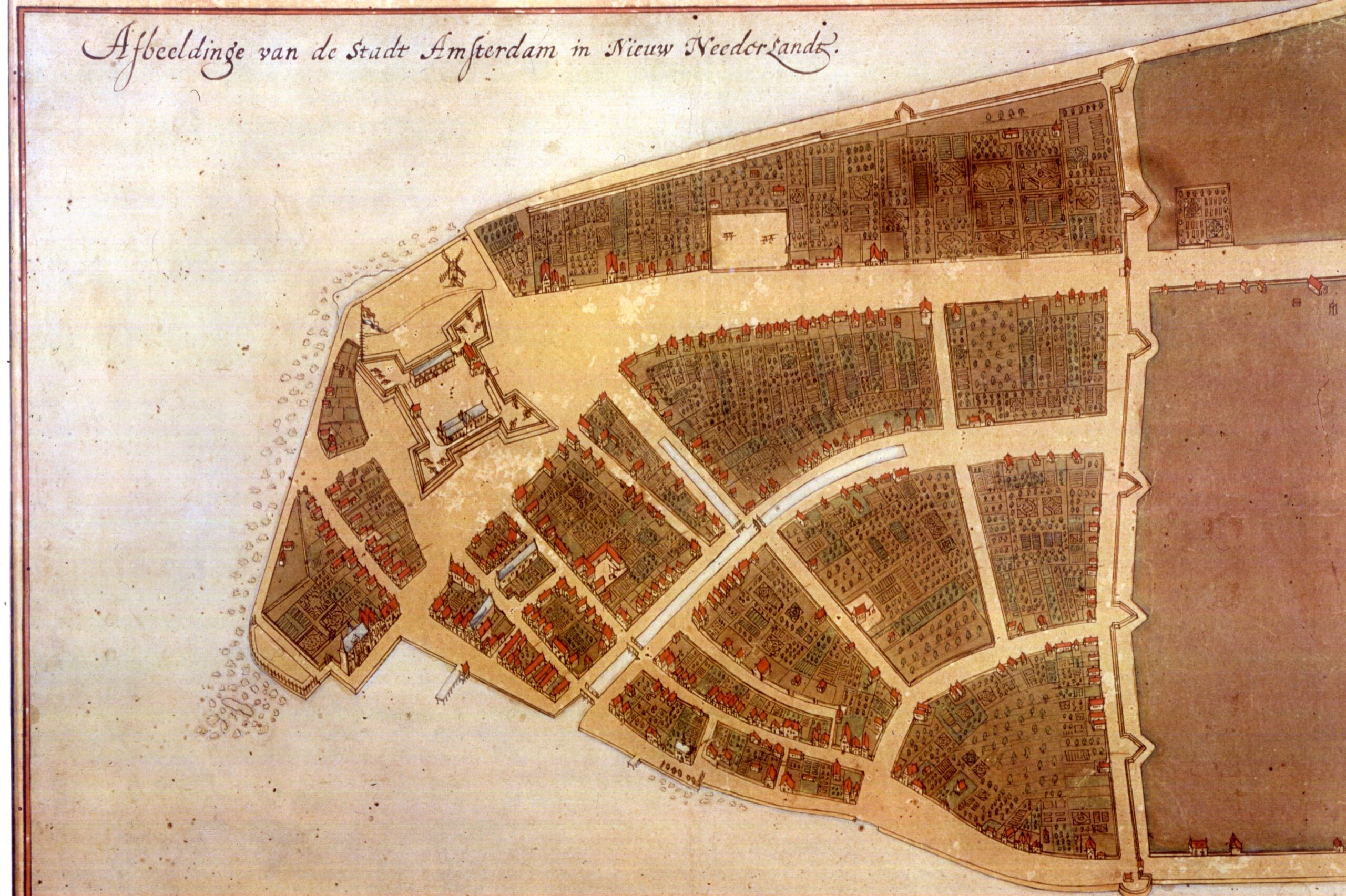
NY400 – The Governance of New Amsterdam
Learn about Nicasius de Sille and the Stadhuis:
Learn about Pieter Tonneman and the Stadhuis:
Scripts
Don’t want to watch the videos? Read the scripts here!
Video 1:
Nicasius de Sille was the second most powerful official of New Netherland, after the Director General. De Sille was born in Arnhem in 1610, as the son of one of the Burgomasters of the town. He had already made a career as a soldier and an administrator in the Dutch Republic, before migrating to New Amsterdam in the summer of 1653. He first lived with his family in New Amsterdam and later moved to New Utrecht, modern Brooklyn. He had five children, all with his first wife, who died before they moved to the new world. He remarried with Trijntje Cregier, but the union was, by all accounts, a disaster. They separated four years later, when Trijntje was accused of public drunkenness. De Sille was also a poet. His surviving works dealt with faith, nature and the premature death of his child. During his time in New Amsterdam, he was the first councilor to Director-General Petrus Stuyvesant. After the Peach War-an attack by a number of Native groups during which fifty colonists were killed in 1655, Fiscal Cornelis van Tienhoven was sacked. De Sille was appointed fiscal of New Netherland in his place.
In his position as fiscal, De Sille had to uphold the rights of the West India Company and could investigate and prosecute anyone that transgressed them. For example, in 1660, Stuyvesant tasked De Sille with investigating the murder of three Natives by European colonists. To maintain peace between the WIC and the Native Americans, De Sille made sure to have some of them present during the trial and execution of the perpetrators.
Nicasius de Sille shows us how justice was dealt in New Amsterdam. As a prosecutor, he had to maintain peace between the Native Americans and the Europeans. He had to do justice in both the eyes of the original inhabitants and the newcomers.
Video 2:
From 1660 to 1665, Pieter Tonneman was the sheriff (schout) of New Amsterdam. Born in 1590, he was part of a civilian militia in Amsterdam before he arrived in New Netherland. His militia is depicted in the this painting, although it is not sure which soldier serves as a depiction of Tonneman.
Before his term as the sheriff in Nieuw-Amsterdam, he had served in the same position for the town of Breuckelen (Brooklyn). He was the first proper sheriff of New Amsterdam, as his predecessor Nicasius de Sille had combined the office with that of fiscal. Unlike De Sille, Tonneman only had jurisdiction over New Amsterdam. He also had to answer to de Sille. As a sheriff, he had to deal with serious cases, ranging from crimes such as theft and domestic violence, to lesser offences, such as alleged misconduct in the production of bread.
For instance, in 1661, Tonneman accused baker Antony de Milt of deliberately making his bread too light. De Milt maintained his innocence, stating that this happened due to an error in the baking process. The two burgomasters and the five aldermen nevertheless sentenced him to a fine of one hundred and fifty guilders.
Tonneman also attempted to enforce public morality; He persecuted tappers for selling alcohol on a Sunday. He also fined colonists who would serve beer to enslaved Africans, as that was strictly forbidden. In 1662, Tonneman even demanded that Geertje Teunis, an innkeeper, would be suspended from the trade because she provided Mattheu, an enslaved man in the service of Cornelis Steenwijck, with beer on a Sunday.
Pieter Tonneman gives us a glimpse of the enforcement of justice within New Amsterdam. He was responsible for the enforcement of a wide range of laws, some of which excluded other residents of the colony.


